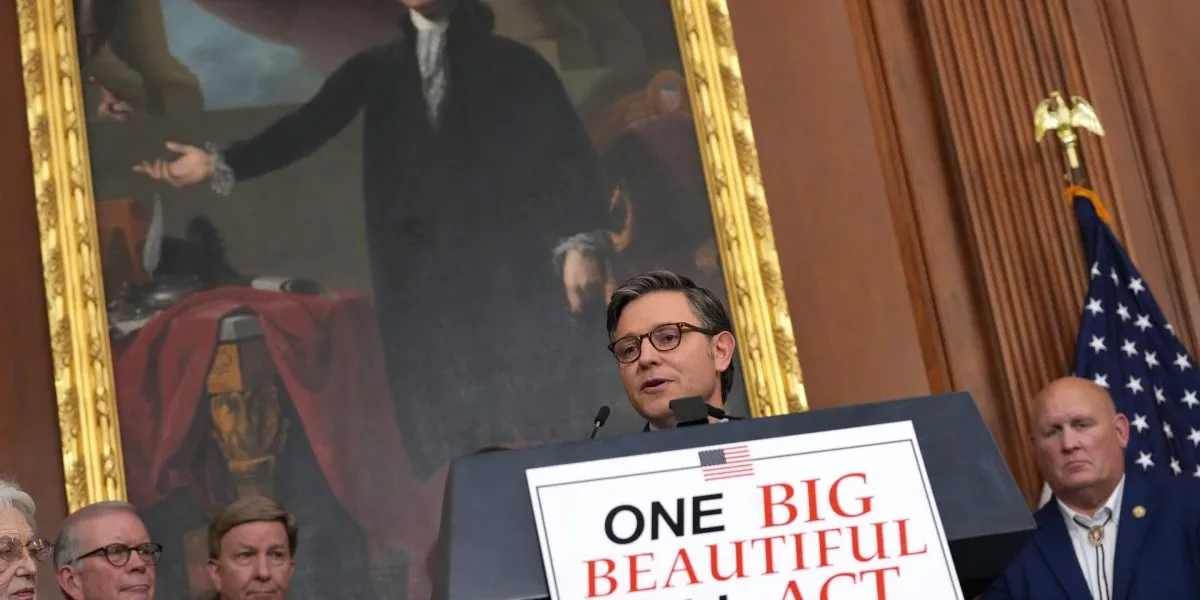
The recent spending bill passed by House Republicans, along with increased tariff revenue, is projected to slightly lower the budget deficit when excluding interest payments. Analysts at Goldman Sachs, including Manuel Abecasis, David Mericle, and Alec Phillips, highlighted this in a note released on Tuesday. Despite this minor reduction, the analysts emphasized that the overall trajectory of the deficit remains largely unchanged due to rising borrowing costs.
Goldman Sachs' report indicates that the primary deficit is significantly larger than typical for a strong economy. The debt-to-GDP ratio is nearing post-World War II highs, and increasing real interest rates are leading to a steeper rise in the debt and interest expenses as a percentage of GDP compared to previous cycles. “But that path remains unsustainable,” the Goldman team warned.
As illustrated in accompanying charts, the future scale of the national debt is heavily influenced by interest rate trends over the next couple of decades. At present, the U.S. national debt has reached an alarming $36 trillion, which is approximately 120% of the country’s GDP. The Treasury Department is compelled to borrow more funds just to cover the escalating costs of servicing this debt.
Currently, the U.S. government spends more on interest for its debt than on essential programs such as Medicare and defense. According to the Committee for a Responsible Federal Budget, these interest payments are expected to hit $1 trillion next year, making them the second-largest government expenditure after Social Security.
If the debt continues to expand, Goldman Sachs warns that interest expenses could become so substantial that stabilizing the debt-to-GDP ratio would necessitate running persistent fiscal surpluses of a size rarely seen in history. This is due to the economic costs and political challenges associated with achieving such fiscal discipline.
Both the first Trump and Biden administrations adopted a budgetary approach akin to wartime spending to combat the economic fallout from the COVID-19 pandemic. Unfortunately, the flow of spending never ceased, even as the U.S. economy returned to full employment. The nonpartisan Congressional Budget Office estimates that the recently passed GOP spending bill will increase deficits by a staggering $2.8 trillion over the next decade.
While the White House and some Republican lawmakers argue that this projection should exclude the costs associated with extending Trump’s 2017 tax cuts—which are set to expire this year without the bill—this only complicates the already daunting $36 trillion debt predicament.
Gennadiy Goldberg, head of U.S. rates strategy at TD Securities, suggested in an interview with Fortune that the core issue lies in understanding at what point the national debt becomes unsustainable. Treasury Secretary Scott Bessent has argued that the U.S. has a “spending problem,” not a “revenue problem.” Goldberg concurs with this assessment but also notes that the U.S. tax rates are relatively low compared to the country’s GDP and government expenditures. “Either taxes need to rise, spending must decrease, or a combination of both is necessary,” he remarked.
As lawmakers continue to delay decisive action, future administrations may find themselves in an increasingly precarious position, particularly if borrowing costs escalate. Long-term U.S. Treasury bond yields have remained high as investors await a Federal Reserve decision to cut interest rates. Concerns surrounding the growing deficit and potential inflation may further exert upward pressure on interest rates.
Experts in fixed income are also keeping a close eye on changes in foreign demand for U.S. debt. If escalating trade and geopolitical tensions compromise the dollar’s status as the world’s reserve currency, the U.S. government may find itself borrowing at significantly higher rates than it has in the past. This scenario could compel Congress to make increasingly difficult choices regarding both spending and taxation.
If lawmakers procrastinate too long, a drastic austerity initiative may become necessary to prevent a fiscal crisis. The Goldman Sachs team cautioned that such a scenario could lead to a large-scale fiscal consolidation that, if GDP declines significantly, might not even result in a reduced debt-to-GDP ratio.
Politicians may feel tempted to resort to printing excessive amounts of money to cover governmental expenses. Historical precedents, such as the hyperinflation experienced by Germany's Weimar Republic after World War I, serve as a stark reminder of the potentially devastating economic consequences of such actions. This resulting turmoil not only led to economic decline but also to significant social unrest, ultimately contributing to the rise of the Nazi Party. However, the lessons from history are often overlooked by contemporary governments.